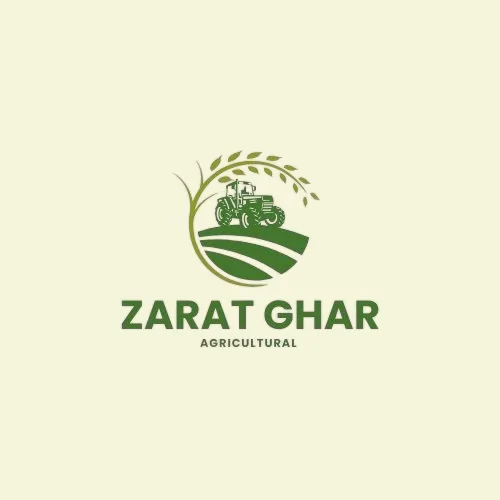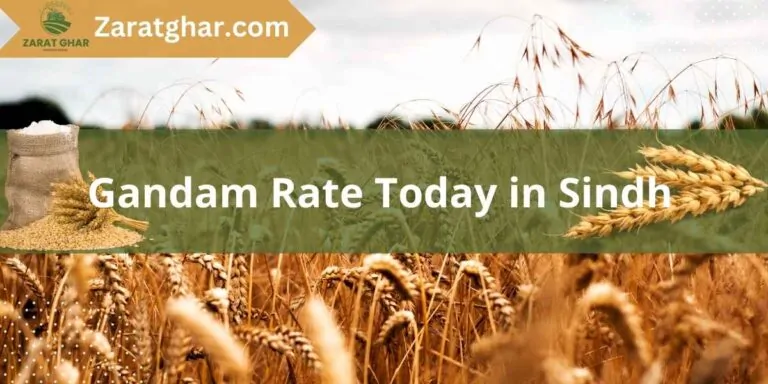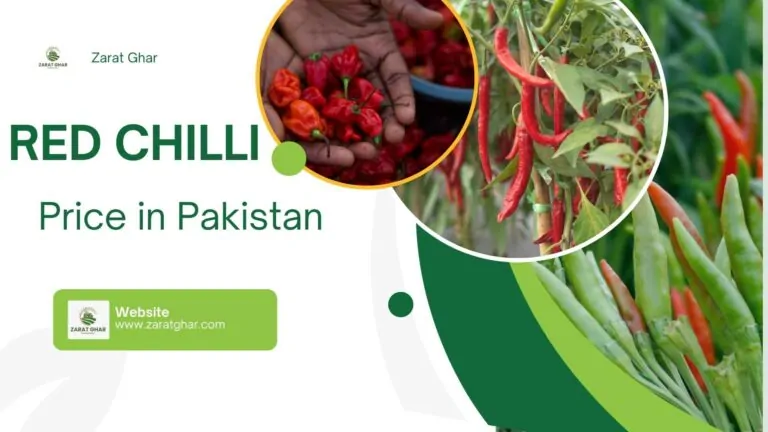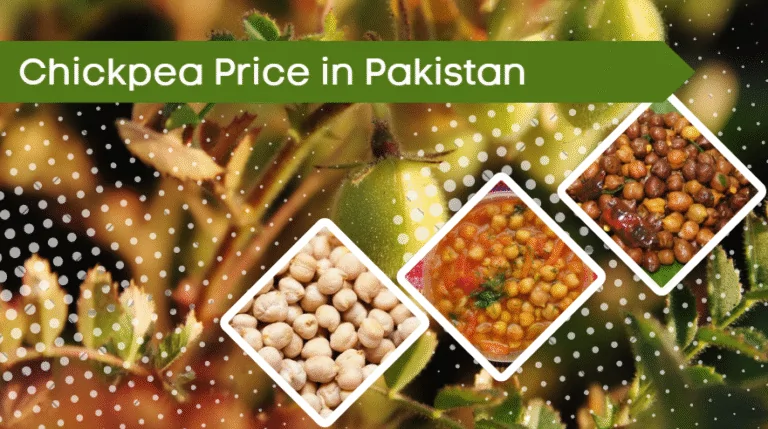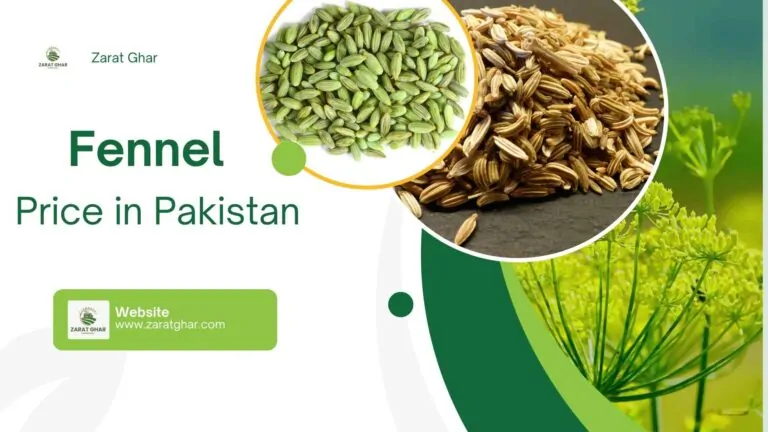Wheat Price in Pakistan Today | December 2025
The wheat price in Pakistan stands at PKR 3,600 to PKR 4,670 per 40kg based on the city, transportation cost, quality, and type of wheat (Gundam – گندم – ). In Punjab, the per kg price is somewhere between Rs. 105 to Rs. 120. Sindh may have a higher wheat price compared to Punjab because the Sindhi cities are far from the suppliers.
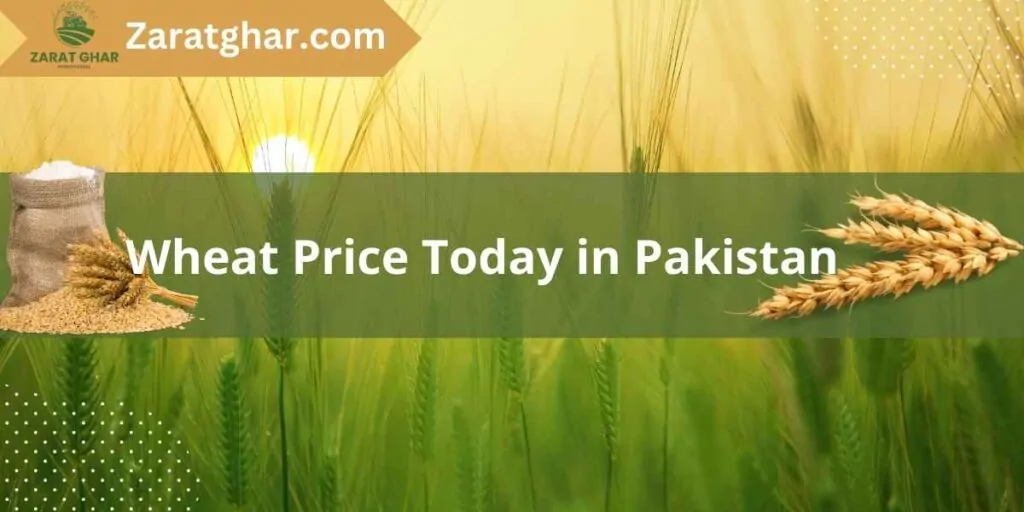
The price of wheat flour (aatta) is approximately Rs. 4,500 – Rs. 5,837 for 50kg and Rs. 10,000 – 12,000 PKR for 100kg packs. Lahore and karachi are major consumption centers where aata prices fluctuate daily. Due to better infrastructural supply chains and a government Support price in the province of Punjab, wheat prices in lahore are relatively more stable compared to other regions and cities. The set support price provides farmers and traders an ensured estimated price in the harvesting season.
Wheat Rate Today in Punjab
| District / City | New Wheat Minimum Rate | New Wheat Maximum Rate |
|---|---|---|
| ArifWala (عارف والا) | 3,640 PKR | 4,685 PKR |
| Ali Pur (علی پور) | 3,670 PKR | 4,680 PKR |
| A.Pur Sharqia (احمد پور شرقیہ) | 3,650 PKR | 4,690 PKR |
| Bahawalnagar (بہاولنگر) | 3,600 PKR | 4,690 PKR |
| Bahawalpur (بہاولپور) | 3,620 PKR | 4,670 PKR |
| Bhakkar (بکھر) | 3,660 PKR | 4,600 PKR |
| Burewala (بورےوالا) | 3,600 PKR | 4,670 PKR |
| Chichawatni (چیچہ وطنی) | 3,620 PKR | 4,680 PKR |
| Chishtian (چشتیاں) | 3,680 PKR | 4,625 PKR |
| Chowk Azam (چوک اعظم) | 3,640 PKR | 4,610 PKR |
| Chakwal (چکوال) | 3,660 PKR | 4,680 PKR |
| Chowk Munda (چوک مُنڈا) | 3,660 PKR | 4,670 PKR |
| Dera Ghazi Khan (ڈیرہ غازی خان) | 3,650 PKR | 4,690 PKR |
| D. I. Khan (ڈیرہ اسماعیل خان) | 3,660 PKR | 4,680 PKR |
| Dunga Bunga (ڈنگہ بونگہ) | 3,610 PKR | 4,650 PKR |
| Dunya Pur (دنیاپور) | 3,670 PKR | 4,690 PKR |
| Faisalabad (فیصل آباد) | 3,660 PKR | 4,680 PKR |
| Faqirwali (فقیروالی) | 3,630 PKR | 4,670 PKR |
| Fazil Pur (فضل پور) | 3,680 PKR | 4,670 PKR |
| Fortabbas (فورٹ عباس) | 3,640 PKR | 4,690 PKR |
| Gujranwala (گوجرانوالہ) | 3,600 PKR | 4,670 PKR |
| Haroonabad (ہارون آباد) | 3,610 PKR | 4,680 PKR |
| Hasilpur (حاصل پور) | 3,630 PKR | 4,610 PKR |
| Islamabad (اسلام آباد) | 3,600 PKR | 4,600 PKR |
| Kahror Pakka (کہروڑپکّا) | 3,660 PKR | 4,660 PKR |
| Khanpur (خان پور) | 3,660 PKR | 4,610 PKR |
| khanewal (خانیوال) | 3,640 PKR | 4,620 PKR |
| Layyah (لیہ) | 3,670 PKR | 4,620 PKR |
| Lahore (لاہور) | 3,650 PKR | 4,640 PKR |
| Lodhran (لودھراں) | 3,630 PKR | 4,690 PKR |
| Maroot (مروٹ) | 3,650 PKR | 4,600 PKR |
| Multan (ملتان) | 3,650 PKR | 4,640 PKR |
| Mianwali (میانوالی) | 3,650 PKR | 4,610 PKR |
| Mian Channu (میاں چنّوں) | 3,650 PKR | 4,620 PKR |
| Minchanabad (منچن آباد) | 3,620 PKR | 4,680 PKR |
| Muzaffargarh (مظفر گڑھ) | 3,670 PKR | 4,690 PKR |
| Malsi (میلسی) | 3,650 PKR | 4,680 PKR |
| Okara (اوکاڑہ) | 3,660 PKR | 4,680 PKR |
| Pattoki (پتّوکی) | 3,670 PKR | 4,680 PKR |
| Pakpattan Sharif (پاک پتن) | 3,630 PKR | 4,600 PKR |
| Rahim Yar Khan (رحیم یار خان) | 3,640 PKR | 4,620 PKR |
| Rajanpur (راجن پور) | 3,650 PKR | 4,660 PKR |
| Rawalpindi (راولپنڈی) | 3,600 PKR | 4,600 PKR |
| Sadiqabad (صادق آباد) | 3,690 PKR | 4,640 PKR |
| Sahiwal (ساہیوال) | 3,690 PKR | 4,630 PKR |
| Sargodha (سرگودھا) | 3,690 PKR | 4,620 PKR |
| Sheikhupura (شیخوپورہ) | 3,600 PKR | 4,690 PKR |
| Toba Tek Singh (ٹوبہ ٹیک سنگھ) | 3,650 PKR | 4,600 PKR |
| Vehari (وہاڑی) | 3,650 PKR | 4,610 PKR |
| Yazman Mandi (یزمان) | 3,620 PKR | 4,675 PKR |
Wheat Rate Today in Sindh
| District / City | Minimum Rate | Maximum Rate |
|---|---|---|
| Dadu (دادو) | 3,650 PKR | 4,600 PKR |
| Hyderabad (حیدرآباد) | 3,670 PKR | 4,660 PKR |
| Ghotki (گھوٹکی) | 3,680 PKR | 4,630 PKR |
| Jhuddo (جھڈو) | 3,600 PKR | 4,650 PKR |
| Karachi (کراچی) | 3,640 PKR | 4,660 PKR |
| Kunri (کنری) | 3,680 PKR | 4,630 PKR |
| Larkana (لاڑکانہ) | 3,650 PKR | 4,620 PKR |
| Mehrabpur (محراب پور) | 3,600 PKR | 4,660 PKR |
| Mirpur Khas (میرپور خاص) | 3,670 PKR | 4,640 PKR |
| Nawab Shah (نواب شاہ) | 3,690 PKR | 4,620 PKR |
| Sakrand (سکرنڈ) | 3,630 PKR | 4,630 PKR |
| Sanghar (سانگھڑ) | 3,650 PKR | 4,660 PKR |
| Shikarpur (شکارپور) | 3,640 PKR | 4,600 PKR |
| ShahdadPur (شہداد پور) | 3,640 PKR | 4,660 PKR |
| Sukkur (سکھر) | 3,670 PKR | 4,650 PKR |
| Tando Allah Yar (ٹنڈو اللہ یار) | 3,660 PKR | 4,640 PKR |
| Tando M. Khan (ٹنڈو محمد خان) | 3,660 PKR | 4,660 PKR |
| Umarkot (عمرکوٹ) | 3,650 PKR | 4,640 PKR |
Wheat Rate Today in Balochistan
| Balochistan Cities | Minimum Price (40kg) | Maximum Price (40kg) |
|---|---|---|
| Chaman | Rs. 3630 | Rs. 4660 |
| Dera Murad Jamali | Rs. 3620 | Rs. 4650 |
| Gulistan | Rs. 3650 | Rs. 4670 |
| Gandawah | Rs. 3660 | Rs. 4690 |
| Gwadar | Rs. 3610 | Rs. 4630 |
| Hub | Rs. 3630 | Rs. 4660 |
| Jhal Jhao | Rs. 3660 | Rs. 4690 |
| Jacobabad | Rs. 3620 | Rs. 4640 |
| Kohlu | Rs. 3620 | Rs. 4630 |
| Khuzdar | Rs. 3600 | Rs. 4620 |
| Mashkel | Rs. 3660 | Rs. 4680 |
| Quetta | Rs. 3650 | Rs. 4660 |
| Surab | Rs. 3650 | Rs. 4680 |
| Sibi | Rs. 3660 | Rs. 4690 |
| Turbat | Rs. 3670 | Rs. 4680 |
| Ziarat | Rs. 3680 | Rs. 4690 |
Wheat Rate Today in KPK
| KPK Cities | Minimum Price (40kg) | Maximum Price (40kg) |
|---|---|---|
| Abbottabad | Rs. 3630 | Rs. 4660 |
| Dera Ismail Khan | Rs. 3620 | Rs. 4640 |
| Hangu | Rs. 3630 | Rs. 4660 |
| Karak | Rs. 3650 | Rs. 4680 |
| Kulachi | Rs. 3660 | Rs. 4690 |
| Kohat | Rs. 3660 | Rs. 4640 |
| Landi Kotal | Rs. 3600 | Rs. 4620 |
| Lakki Marwat | Rs. 3620 | Rs. 4660 |
| Madyan | Rs. 3650 | Rs. 4670 |
| Mingora | Rs. 3630 | Rs. 4640 |
| Mardan | Rs. 3640 | Rs. 4640 |
| Mansehra | Rs. 3670 | Rs. 4690 |
| Nowshera | Rs. 3600 | Rs. 4620 |
| Peshawar | Rs. 3630 | Rs. 4650 |
| Swabi | Rs. 3620 | Rs. 4640 |
Key Factors Driving Wheat Prices in July 2025
The following interconnected issues are causing the current situation of wheat pricing in Pakistan:
1 Decreased Domestic Production
Wheat production for the 2024-25 season was almost 8% less than the government’s set target, which can be attributed to:
- Underperforming rainfall during winter months for important crop regions.
- Soaring costs of agrochemicals and thus, farmer expenditure.
- Famine of energy, particularly around irrigation and harvesting.
The aforementioned problems have created a need for greater imports, however, this is not without complications.
2 Global Market Developments as well Pakistan Imports Dependency
This year, Pakistan has almost met the domestic demand with an import of 1.5 million tonnes of wheat. However, geopolitcal conflicts in the black sea region along with irregular weather in Europe and North America have raised the prices of wheat worldwide.
Such reasons have increased the cost of importing goods, which in turn has also raised the domestic prices, particularly in areas with weak supply chains.
3 Changes in the Value of Currency and Inflation
The exchange rate puts continuous stress on the Pakistani rupee which remains around 310 rupees for a dollar. This has a much larger effect on the import inflation of agricultural goods such as wheat, increasing the already existing inflation in prices of food.
The Pakistan Bureau of Statistics puts inflation on average around 18 percent year on year for July 2025 with food inflation estimated to be at an even higher margin of 22 percent
4 Challenges of Distribution and Transportation Actually Faced Today
Availability of wheat is influenced by current fuel price wars and persisting road network issues due to floods in southern Punjab and northern Sindh. Such logistical issues lead to spurious shortages in far off districts along with regional price fluctuations.
Government Response and Market Outlook
The federal and provincial governments have implemented various measures to contain the market:
- To help stabilize the price of atta, the Punjab Food Department is now supplying wheat stocks to flour mills at subsidized rates.
- To shield vulnerable households from the surge in flour prices, targeted subsidies through the Benazir Income Support Program (BISP) are being considered.
- Negotiations are in progress with some international counterparts like Russia and Kazakhstan regarding government-to-government wheat procurement agreements at lower-than-market prices.
If the planned import shipment schedule is adhered to and if timely, proactive provisions along with conducive weather are available during the forthcoming rabi season, there may be stabilization around 2025.
Conclusion
wheat prices are still elevated in Pakistan owing to local production problems, reliance on imports, and international economic factors. As relief measures are being put into place, long-term food security relies heavily on strategic foresight in planning, climate-responsive agriculture, and well-balanced control of markets. For both consumers and policymakers, wheat prices symbolize more than mere figures—they represent quite sensitive matters such as economic well-being and social equilibrium.
See Also;
